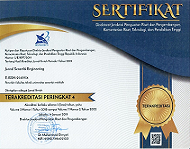Utilization of Unripened Coconut Waste as An Organic Fertilizer and Its Quality Testing
Keywords:
Unripened coconut waste, organic fertilizer, nitrogen, phosphorus, potassiumAbstract
The aim of this study was to create and evaluate the quality of organic fertilizer using Unripened coconut waste. The process involves chopping the waste into small pieces and placing it in a container or bucket. EM4 activator liquid is then sprayed onto the waste, followed by the addition of molasses. This process is repeated for the second and subsequent batches. The prepared Unripened coconut waste is covered withblack plastic to maintain anaerobic conditions and a temperature of no more than 60°C. The pile is turned multiple times to stabilize the temperature at ± 35-45°C. The first turning occurs after one week, followedby weekly turning for up to one month. The resulting fertilizer is dried through aeration, sieved, and tested for quality. The water content was determined using the distillation method, while total nitrogen wasmeasured using the Kjeldahl method. Phosphorus was quantified using a UV-Vis Spectrophotometer, and potassium was analysed using AAS. The results indicate that Unripened coconut waste can be utilised as an organic fertiliser. The fertiliser is brown in colour, soft in texture, has an earthy smell, and a temperature of 28°C. The organic fertiliser contains 22.8% water, 0.833% nitrogen, 0.118% phosphorus, and 5.616% potassium. The produced organic fertilizer meets the specifications for fertilizer from organic waste based on nitrogen, phosphorus, and potassium content according to SNI 19-7030-2004.












